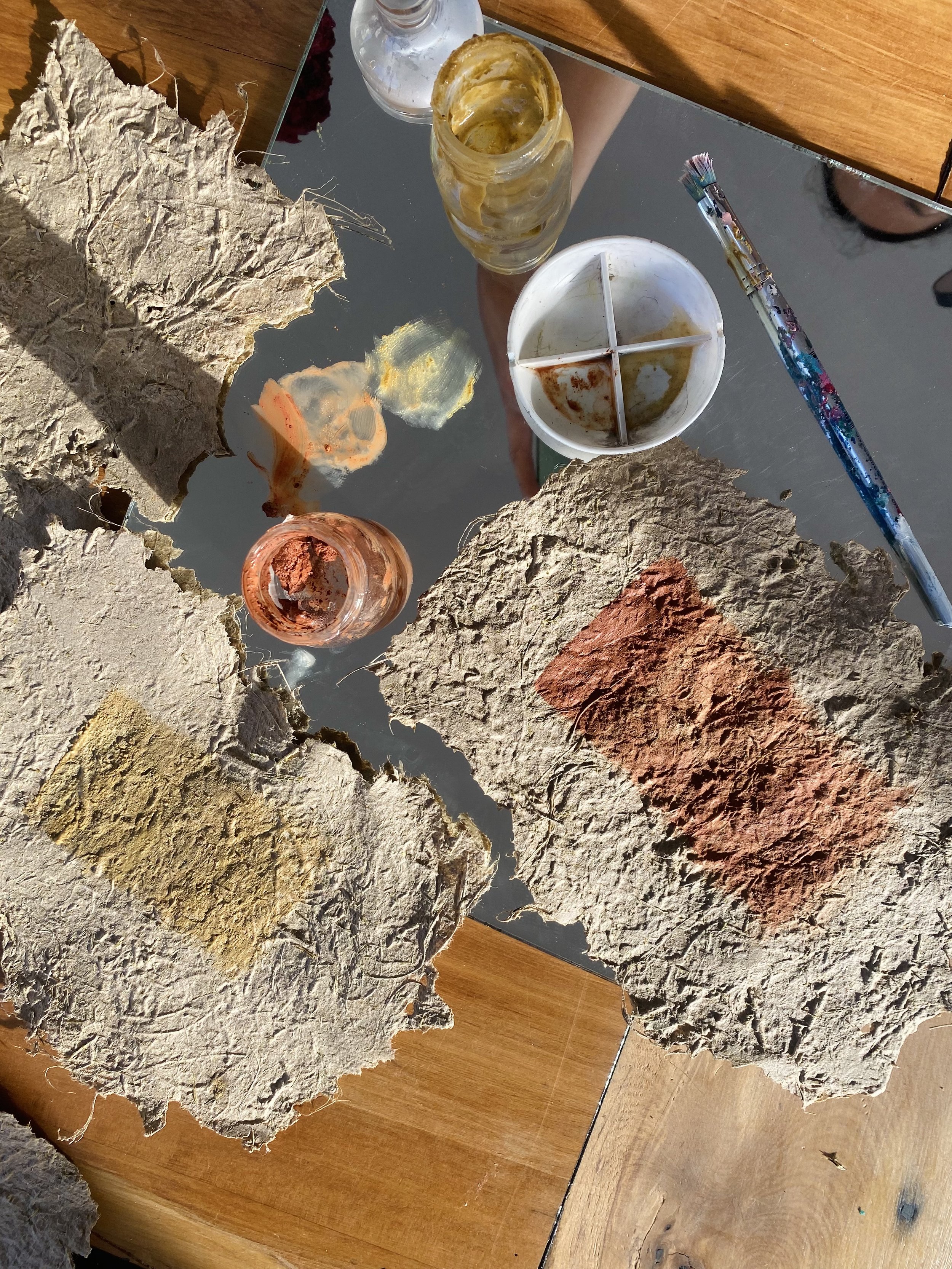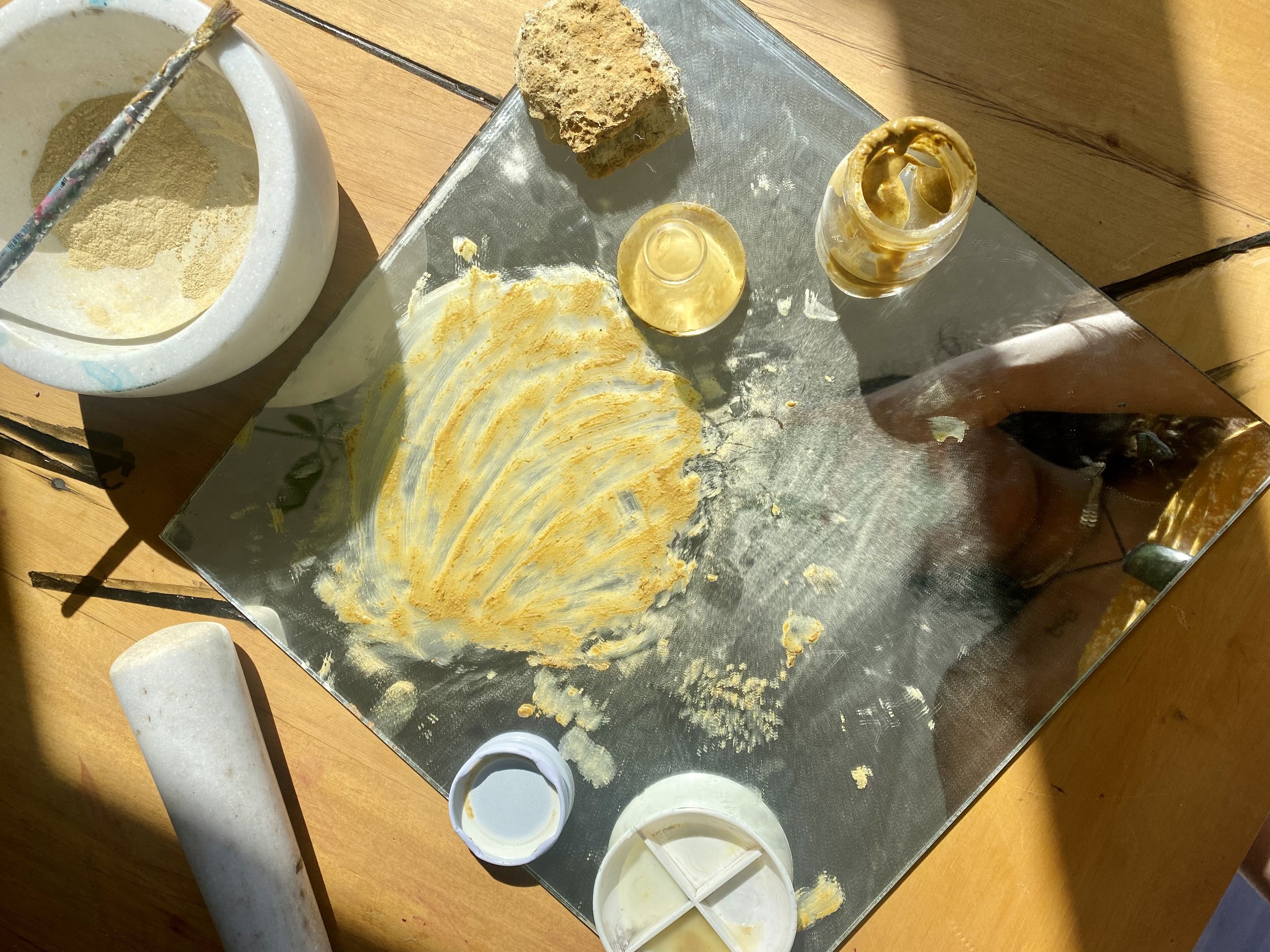
Moewai Marsh - Tauraka Toi: A Landing Place
Nā Sarah Hudson, Feb 2022
Paemanu are a Kāi Tahu Contemporary Visual Arts trust, formed by a group of established Kāi Tahu arts professionals who are dedicated to advancing their iwi-specific visual culture through innovative artistic expression. Over the last few years, a team of senior Kāi Tahu contemporary artists and Paemanu trustees have curated Tauraka Toi, A Landing Place which is currently showing at the Dunedin Public Art Gallery (DPAG) until 25 April, 2022. This is a milestone exhibition that occupies the foyer and six galleries on the first floor of DPAG. In an inspiring model of tuakana/teina intergenerational relationships and kotahitanga collectivity; Tauraka Toi features newly commissioned works and ushers in a new generation of artists alongside well-established practitioners.
Moewai holding one of her mixed-media landscapes You are not alone Toroa (2021)
One of those emerging artists is Moewai Marsh, hailing from Kai Tahu, and Ngāti Kahungungu ki te Wairoa. Moewai went through the Dunedin School of Art and recently completed a Toi Māori qualification with Te Wānanga o Aotearoa. During these courses, she established a painting practice informed by whakapapa, whenua, mauri and wairua. Acknowledging these are concepts that inform many Māori artists, Moewai worked hard to find her own artistic style. Over time, she developed a method of imbuing mixed media landscapes with layers of soil, sand, clay and acrylic paint.
After graduating Dunedin School of Art in 2019, Moewai was invited to meet and learn from Kāi Tahu artists at a Paemanu wānanga. From this invitation, another was extended, to exhibit alongside more than 40 Kāi Tahu artists as a part of Tauraka Toi. Under the guidance of established artist Nathan Pohio, Moewai began to learn new ways to express the cornerstones of her practice: whakapapa, whenua, mauri and wairua - through a relationship with earth pigments.
Nathan encouraged Moewai to go to her ancestral places, Puketeraki, Arai Te Uru and Ōtakau. She met with relations, ahi kā, who shared their knowledge and love for the whenua. With permission and respect, Moewai gathered a collection of earth pigment samples to process into art materials. This model of exploration of place and relationships shifted Moewai’s mixed-media practice in a different direction to what she’d established at art school. For this project, the imagery started to shift from figurative landscapes to pared-back processes that embody a relationship with the land.
While on the journey to visit wāhi tūpuna, the artist felt a pull to not only gather earth pigments, but also to harvest parts of invasive plant species that cover the land. Sharp, spiny plants like Nettle and Gorse were gathered and turned into handmade paper. In Aotearoa, Gorse is considered to be “the worst” scrub weed, in some places its domination over the landscape is hard to miss as it takes up so much space which makes it stifles the growth of native species. This informs public perception of controlling these weeds to be almost futile. Moewai went against this sense of futility and put these plants to work. She stripped the plants and processed them into paper, that paper was then painted with watercolour paint made from the whenua. Here, in a resilient act, mana whenua overrules the introduced species and they sit balanced and together housed in frames to talk about whakapapa, whenua, mauri and wairua.
Moewai Marsh’s earth pigment project Tuturu Series 1-4 (2021) is available to view at the Dunedin Public Art Gallery in Ōtepoti until the 25th of April. Be sure to follow her growing art practice via instagram @moewaimarsh_art
Moewai standing next to her work ‘Tuturu Series 1-4’ (2021) at the opening of Tauraka Toi: A Landing Place, Dunedin Public Art Gallery



